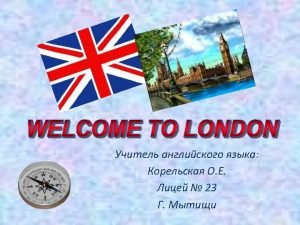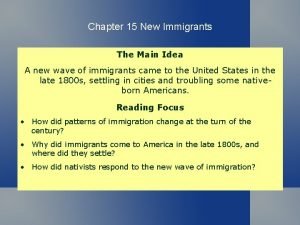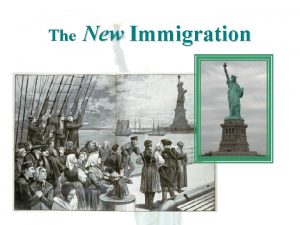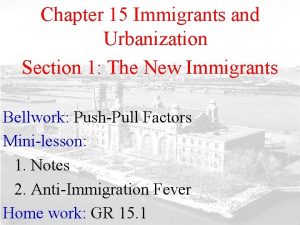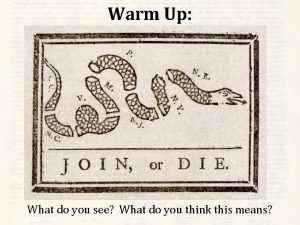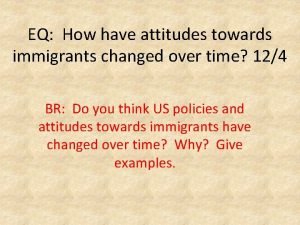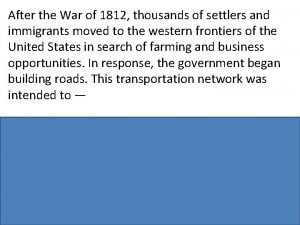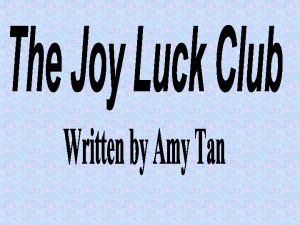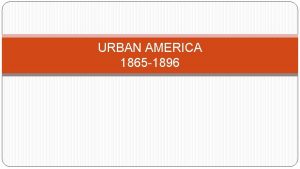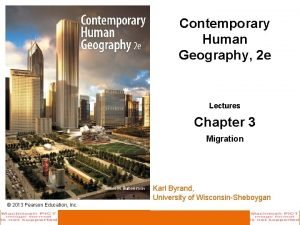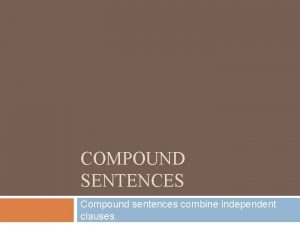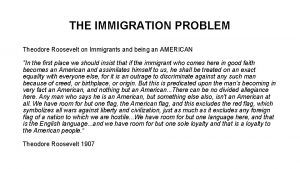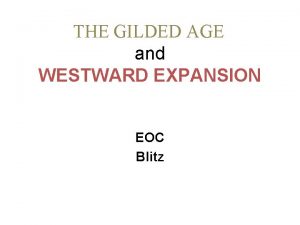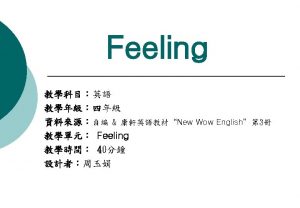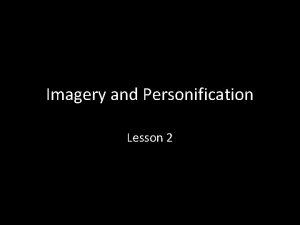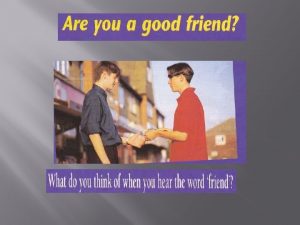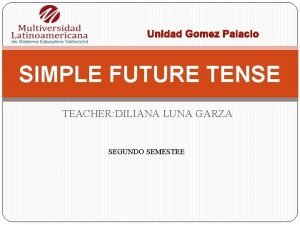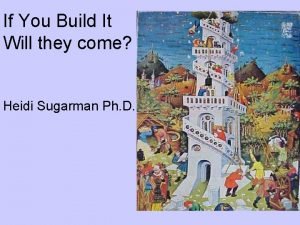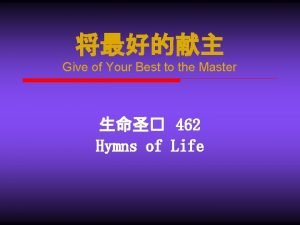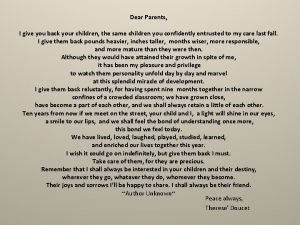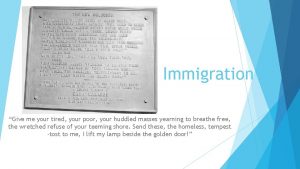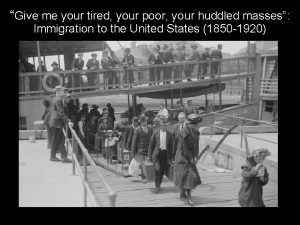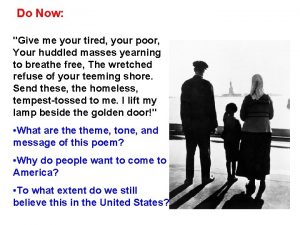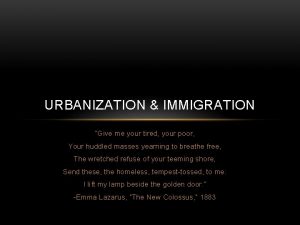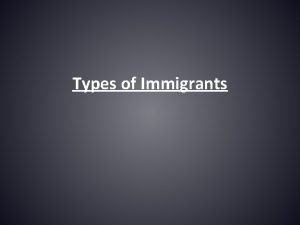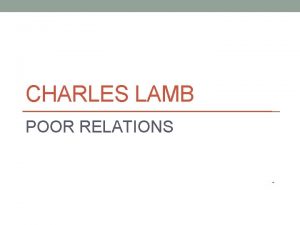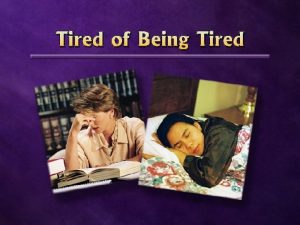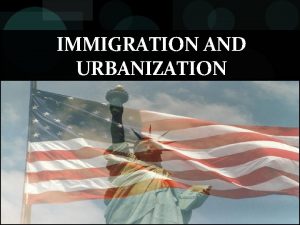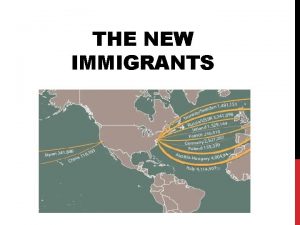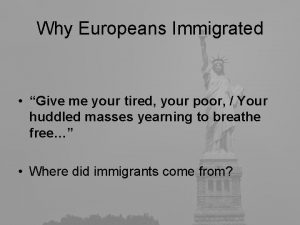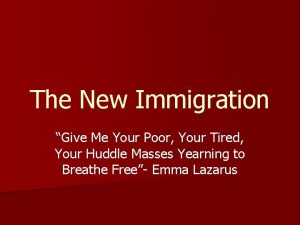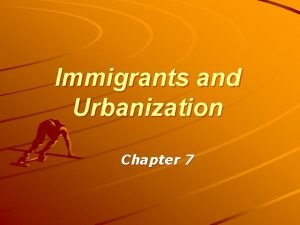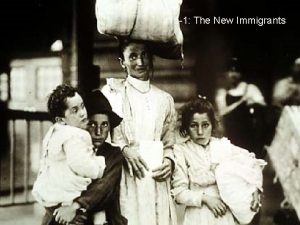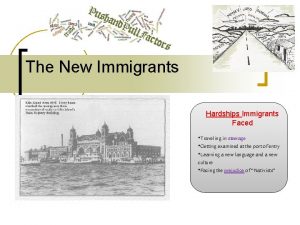New Immigrants Give me your tired your poor





















































- Slides: 53

New Immigrants



Give me your tired, your poor, Your huddled masses yearning to breathe free, The wretched refuse of your teeming shore. Send these — the homeless, tempest-tossed — to me; I lift my lamp beside the Golden Door.

Urban Growth: 1870 - 1900

The “New Immigration” § Immigrants from Italy, Austria-Hungary, Greece, Russia and other countries of eastern and southern Europe arrived in increasingly large numbers § They were the “New Immigrants” because their cultures were different from those of the earlier groups from western Europe

Assimilation Issue § The “new immigrants” who arrived after the Civil War were distrusted § There was fear that these immigrants would not assimilate easily into the English-speaking culture § Beginning in the 1870’s, the issue of whether or not to admit foreign-born people from all lands became a major issue in U. S. politics


Mulberry Street – “Little Italy”

Hester Street – Jewish Section

Cultural Differences § Few of the “new immigrants, ” especially after 1880, spoke English § Were from Southern and Eastern Europe (Italy) § Most were Roman-Catholic, Orthodox Christians or Jewish § They wore clothing and cooked foods that were unfamiliar


Cultural Differences § Newspaper editorials of the 1870’s and 1880’s raised fears and doubts about the newcomers § The native-born became even more concerned after 1890 when the number of people arriving from southern and eastern Europe began to exceed the numbers from other regions § Between 1900 and 1910, total immigration averaged about one million people a year (compared with 300, 000 in 1860) § By 1910, out of the one million, 700, 000 were from southern and eastern Europe

Latkes cál ceannan Some sort of tofu Jachnun

Pell St. - Chinatown, NYC

CHINATOWN SF (TODAY)

Reasons for Immigration § Reasons why people immigrated varied. § In general, however, every person’s or family’s decision to immigrate was based on two conclusions § Negative: conditions in the home country were bad and could not be tolerated § Positive: conditions in the U. S. were likely to be much better that those at home

Population Pressures (PUSH) § European Population grew: § 1750: 140 million § 1850: 260 million § 1914: 400 million § Farm land was scarce compared to the U. S. § The U. S. ’s rapid industrialization might offer jobs

Economic Conditions § After 1880, it became difficult in Italy, Sweden and Norway for poor farmers § Generation after generation divided up land into smaller and smaller farms

Political Oppression (PUSH) § In many countries of eastern Europe, people resented laws requiring boys of 15 and 16 to serve in the army § Most of the southern and eastern European countries were non-democratic § Some groups wanted to escape persecution § Example: Jews escaping the pogroms of Russia

Recruitment Campaigns (PULL) § Railroads and steamship companies sought passengers

Adjusting to American Life § Leaving one’s country and traveling to an unknown place was difficult and painful § Traveling steerage was dirty and uncomfortable

Efforts to Assimilate § Living in ethnic neighborhoods in U. S. cities, immigrants tried to preserve the customs and languages of that they had known in Europe § At the same time, they tried hard to learn English § Usually, immigrant children learned English and American customs easier than their parents § Schools taught in English and sometime changed the student’s name to make it easier for nativeborn Americans to pronounce it





Living Conditions § People lived in over-crowded tenements § Families often had to share already overcrowded apartments with relatives and friends who had recently arrived from Europe § Many apartments had no bathroom § A single toilet might be available for the whole floor


Immigrants from Asia § Besides immigrants from Europe, a large number of Chinese and Japanese immigrants settled on the West Coast § By 1910, more than 300, 000 Chinese and 150, 000 Japanese had come to work in the U. S. § Most were young men who hoped to work, save, and return to their families in Asia

Contributions § Helped build the first transcontinental railroad § Turned the prairies and forests into farms § Helped make New York City into a booming garment industry § They became workers and laborers in many industries


Nativist Reaction to the New Immigrants § Nativist - someone who believes that the foreign-born pose a threat to the majority culture and should be stopped from entering the country § Know-Nothings - American-born Protestants organized this secret society as a political party and elected candidates who promised to restrict immigration § first target of Nativist anger were the Irish. Catholics in the 1850’s



“Yellow Peril” § In the 1870’s, there was talk of Asian people coming to the U. S. by the millions and overwhelming the American culture § In western states and territories, anti-Chinese riots broke out to protest the so-called “Yellow Peril” § Two laws were passed in response to the Nativist fears and prejudices § Chinese Exclusion Act § Gentlemen’s Agreement

Chinese Exclusion Act § 1882 § Declared that no more Chinese would be permitted to immigrate to the United States


Gentlemen’s Agreement § In the schools of San Francisco, Japanese children were required to attend segregated schools § Japan’s government was deeply offended by this practice § President Roosevelt intervened and persuaded the local governments to stop the practice § The Japanese government agreed to restrict Japanese immigration § This diplomatic understanding was known as the Gentleman’s Agreement (1907 -08)


Causes of Nativist Feeling § Economic: Native-born Americans feared that immigrants would deprive them of their jobs by working for very low wages § Cultural: tendency of people belonging to a dominant culture to protect that culture against outside or “foreign” influences § Psychological: Nativist’s desire to feel superior to others § Political: fear that immigrants might be connected with radical and revolutionary causes

Red Scare § 1919 and 1920 § Communist revolution in Russia in 1917 § Fear that immigrants could bring communism here § A large number of immigrants were arrested and deported in the “Palmer Raids” in 1919 and 1920 § Mitchell Palmer was the Attorney General who ordered the arrests





Counter-Reaction § Nativist reaction was countered by those Americans who recognized the essential contributions of the immigrants § Example: Emma Lazarus’ poem inscribed in the Statue of Liberty

Laws Restricting Immigration § The anti-foreign attitudes of many native-born Americans were reflected in a series of immigration laws passed by Congress between 1882 and 1924 § One purpose of the quota laws of the 1920’s was to reduce to a bare minimum the number of immigrants arriving from southern and eastern Europe § Because of the restrictive immigration laws, fewer than 350, 000 immigrants arrived in the 1930’s

Assimilation: 3 Points of View 1. Total Assimilation or Americanization: immigrants should learn to speak English and become Americanized by adopting all aspects of American culture as quickly as possible; should rid themselves of their old culture 2. Melting Pot Theory: immigrants from various nations would gradually and naturally blend into a single American nation; this culture would combine the best elements of many cultures



3 Points of View 3. Cultural Pluralism: Any cultures and languages should be respected; each ethnic group should practice its own customs while adjusting to the ways of the larger society

 Give us your hungry your tired your poor
Give us your hungry your tired your poor Old immigrants vs new immigrants
Old immigrants vs new immigrants When a man is tired of london he is tired of life
When a man is tired of london he is tired of life New wave immigrants
New wave immigrants Chapter 15 section 1 the new immigrants
Chapter 15 section 1 the new immigrants The new immigrants
The new immigrants Chapter 15 immigrants and urbanization
Chapter 15 immigrants and urbanization What is the main idea of give me liberty or give me death
What is the main idea of give me liberty or give me death How have attitudes towards immigrants changed
How have attitudes towards immigrants changed After the war of 1812 thousands of settlers
After the war of 1812 thousands of settlers Amy tan biography
Amy tan biography Where did most of the irish immigrants settle? *
Where did most of the irish immigrants settle? * Images of europeans
Images of europeans Unauthorized immigrants definition ap human geography
Unauthorized immigrants definition ap human geography Compound sentence about immigrants
Compound sentence about immigrants Teddy roosevelt on immigrants
Teddy roosevelt on immigrants Gained voter support by helping immigrants find jobs.
Gained voter support by helping immigrants find jobs. Chapter 15 section 2 the challenges of urbanization
Chapter 15 section 2 the challenges of urbanization Mood scared
Mood scared Quoted speech and reported speech
Quoted speech and reported speech Im tired lord
Im tired lord Happy sad tired scared hungry sick
Happy sad tired scared hungry sick Closing prayer picture
Closing prayer picture A tired squirrel (mass of 1 kg)
A tired squirrel (mass of 1 kg) For every girl who is tired of acting weak
For every girl who is tired of acting weak I am tired he muttered
I am tired he muttered So tired beatles
So tired beatles A tired squirrel does push ups
A tired squirrel does push ups Matt 11:28-30 msg
Matt 11:28-30 msg Personification examples rain
Personification examples rain What's the matter you look
What's the matter you look Funny superlatives
Funny superlatives Tired future tense
Tired future tense Sleep position
Sleep position How to describe tired eyes
How to describe tired eyes When the three bears came home
When the three bears came home John 13 34 35
John 13 34 35 Invent a new product and give it a name
Invent a new product and give it a name What is your favourite tv show?
What is your favourite tv show? Give of your best to the master lyrics
Give of your best to the master lyrics I give you back your child poem
I give you back your child poem Give me your lunch money
Give me your lunch money How to give effective feedback to your students
How to give effective feedback to your students Your love never fails, it never gives up
Your love never fails, it never gives up 4 qualities of the heart
4 qualities of the heart Giving your heart to god
Giving your heart to god Dear parents i give you back your child poem
Dear parents i give you back your child poem Who is the first person to arrive at juliet's tomb?
Who is the first person to arrive at juliet's tomb? Activity 5 bahasa inggris kelas 11
Activity 5 bahasa inggris kelas 11 Split speech example
Split speech example New york pennsylvania new jersey delaware
New york pennsylvania new jersey delaware Fresh oil new wine
Fresh oil new wine Movie theaters new hartford ny
Movie theaters new hartford ny Strengths of the articles of confederation
Strengths of the articles of confederation


